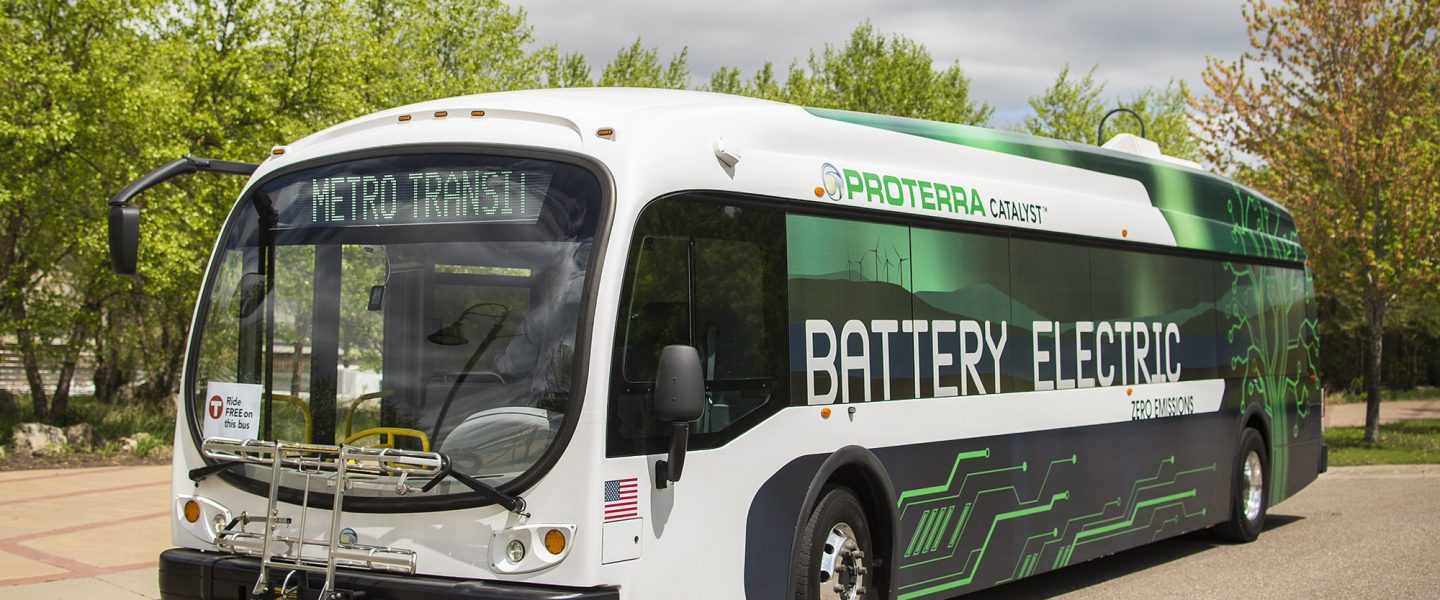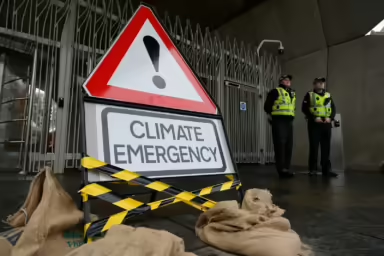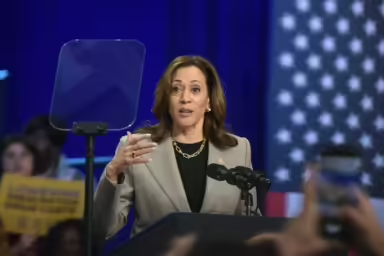The awards have already added 1,800 no-emission buses to the nation’s roadways, more than doubling the number of such vehicles in use.
|
Listen To This Story
|
Across the country, fleets of aging, groaning, gas-guzzling buses are being replaced with new electric models.
On Monday, the Biden administration announced nearly $1.7 billion in grants for municipal transportation departments serving cities, rural areas, and Native American reservations. The awards support multiple levels of the bus-electrification process, helping to fund everything from charging stations and garages to the buses themselves. The geographical reach of these awards is broad and includes the Seneca Nation of Indians in western New York, the Ohio Department of Transportation, and municipal transit authorities in cities like Tucson, Arizona; Philadelphia; Washington, DC; and Seattle.
The funding comes from the 2021 bipartisan infrastructure law, through a combination of two Federal Transit Administration initiatives: the Low- and No-Emission Grant Program and the Grants for Buses and Bus Facilities Program. According to the release, awards related to the infrastructure law have already added 1,800 no-emission buses to the nation’s roadways, more than doubling the number of such vehicles in use.
“Today’s announcement means more clean buses, less pollution, more jobs in manufacturing and maintenance, and better commutes for families across the country,” U.S. Secretary of Transportation Pete Buttigieg told reporters.
The funding, like much of the infrastructure law, is also aimed at reducing long-term inequities, both through expanding transit to underserved communities and providing living-wage employment.
For instance, in King County, Washington — the greater Seattle metro area — the transit authority plans to convert 27 bus lines that serve low-income areas. But it’s also using the project as a means to create an easier pathway to jobs in transit by expanding the county’s apprenticeship programs.
“This funding supports our work to advance equity and social justice by prioritizing service areas for these new electric buses in neighborhoods disproportionately impacted by pollution generated by fossil fuels,” said King County Executive Dow Constantine in a press release.
Labor standards are key to the awards. As a stipulation of the bipartisan infrastructure law, funded projects are subject to Project Labor Agreements, a form of collective bargaining agreement between unions and contractors. These agreements allow unions to set wage rates and benefits for employees working on a specific project.
Many of the selected projects are using this funding to not only meet climate goals, but also to address inequities. Research has shown that America’s public transit systems were constructed along class and racial lines, reducing the efficiency and accessibility of public transit and driving up the cost burden on those who need it the most. Bus fleets aren’t being upgraded to electric models just because of some sense of environmental altruism — they’re actually cheaper to use and maintain, which could in turn go a long way toward expanding service and reducing fares.
For municipalities, this funding provides a helpful stepping stone toward long-term climate commitments. Another grantee, the Washington Metropolitan Transit Authority, has set goals for a fully zero-emission bus fleet by 2042. Over the next two years, the city of Washington, DC, will be building out Phase 1 of its bus-electrification plan. It plans to test models from 12 different bus manufacturers, ensuring that charging stations and garages work and that different bus models can be used interchangeably to allow for smooth progress and further expansion in Phase 2.
However, only about half of the projects that received grants are zero-emissions, with some, like Sun Tran in Tucson, investing in purportedly lower-emission fossil fuels like compressed natural gas. Critics also say that electric buses may lower costs for local transit, but only improvements in the speed, accessibility, and efficiency of bus service will improve the ongoing ridership crisis that many local bus routes have experienced since the onset of the COVID-19 pandemic.
According to the administration, the bipartisan infrastructure law has already invested $3.3 billion in transit and hopes to invest $5 billion more over the next three years.
This story by Katie Myers was originally published by Grist and is part of Covering Climate Now, a global journalism collaboration strengthening coverage of the climate story.





